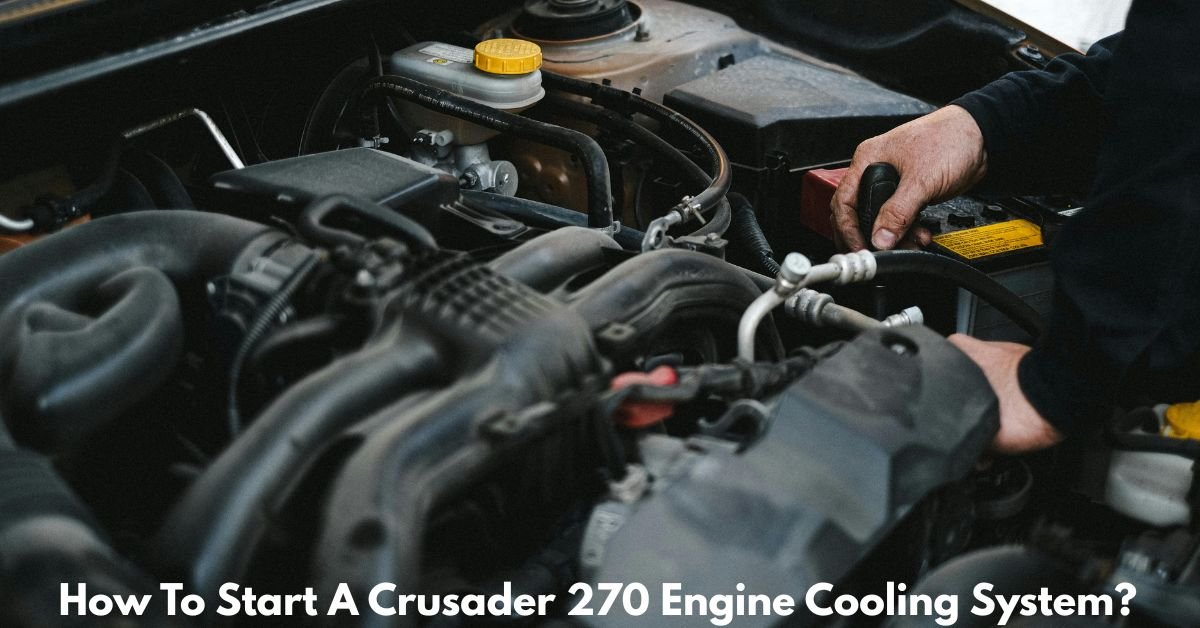The Crusader 270 marine engine is a popular, dependable inboard engine known for its performance and durability in recreational and work boats. One of the most important systems supporting this engine is its cooling system, which keeps the engine operating at safe temperatures and prevents overheating-related damage.
If you’re a new Crusader 270 owner or just want a refresher, this blog will walk you through how to start the cooling system properly, with tips for routine checks and potential troubleshooting.
How to Start a Crusader 270 Engine Cooling System: A Step-by-Step Guide
Understanding the Basics of the Crusader 270 Cooling System
Before jumping into the steps, it’s helpful to understand how the cooling system works.
The Crusader 270 typically uses a raw water cooling system, sometimes combined with a closed-loop (freshwater) system. Here’s the distinction:
- Raw water cooling involves drawing lake or seawater straight into the engine, where it absorbs heat before being released.
- Closed-loop (freshwater) cooling: Coolant circulates through the engine in a closed system, and a heat exchanger transfers the heat to raw water, which is then discharged.
Whichever your setup, the process begins before you turn the ignition key.
Step-by-Step Guide to Starting the Cooling System
1. Check Water Supply Intake
Before you even start the engine:
- Ensure the boat is in the water or properly connected to a flush adapter with a garden hose (if running on land).
- Locate the seacock or intake valve and verify it’s open. If this valve is closed, the engine will be starved of water, potentially causing serious damage in minutes.
Tip: If you’re using a hose for flushing, ensure water is flowing into the intake before starting the engine.
2. Inspect Raw Water Strainer
Debris is captured by the raw water strainer before it reaches the engine. Check for:
- Clear housing with no blockages.
- A tight-fitting lid.
- Clean screen.
If the strainer is clogged, clean it before proceeding.
3. Check Coolant (if using a closed system)
For freshwater-cooled systems:
- Check the coolant levels and open the heat exchanger cap only when the engine is cool.
- Top off with a proper marine-grade coolant mix if needed.
Must Read: Does Ford Offer A 3.0 Diesel Engine?

4. Inspect Hoses and Belts
Perform a visual inspection of:
- Examine any water hoses for leaks, cracks, or loose clamps.
- The belt driving the raw water pump (check tension and wear).
A cracked or loose belt can prevent the impeller from spinning properly, meaning no water circulation.
5. Prime the Raw Water Pump (Optional but Recommended)
If the system has been dry for a long time or the impeller has been recently changed, consider priming the raw water pump. This can involve:
- Removing the hose just after the pump and pouring some water in.
- pulling water into the impeller housing by momentarily turning the engine over (without starting).
6. Start the Engine and Monitor Water Flow
Now you’re ready to start the engine:
- Start the engine while closely monitoring the exhaust discharge.
- Within 15-30 seconds, you should see a steady stream of water exiting the exhaust. This indicates water is circulating through the system.
No water? Shut the engine down immediately and troubleshoot the intake, strainer, or impeller.
7. Watch Engine Temperature
Once the engine is running:
- Watch the temperature gauge. The Crusader 270 should run around 160–180°F depending on conditions.
- Shut down and check the cooling system components if the temperature rises above 200°F.
Common Issues to Watch For
- Impeller failure: A worn impeller is the #1 cause of cooling failure.
- Air leaks: Loose clamps or cracked hoses can introduce air, reducing suction.
- Blocked intake or strainer: Check for seaweed, plastic, or marine growth.
Final Thoughts
Starting your Crusader 270’s cooling system properly is a simple but vital process that can protect your engine from major damage. Taking a few minutes to inspect, confirm water flow, and monitor temperature ensures your boat is ready for a day on the water.
Routine maintenance—such as flushing the system, replacing impellers annually, and inspecting hoses—goes a long way toward keeping your engine reliable and cool.
Have questions about your cooling setup or upgrades like adding a freshwater flush kit? Leave a comment or reach out—we’re here to help!
